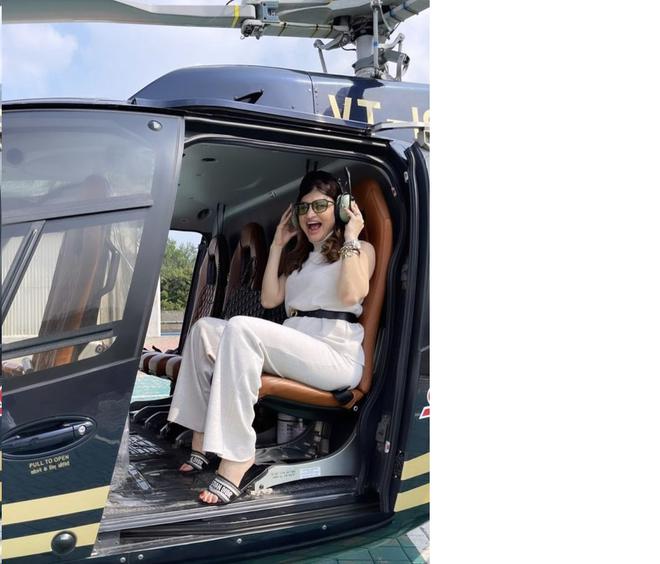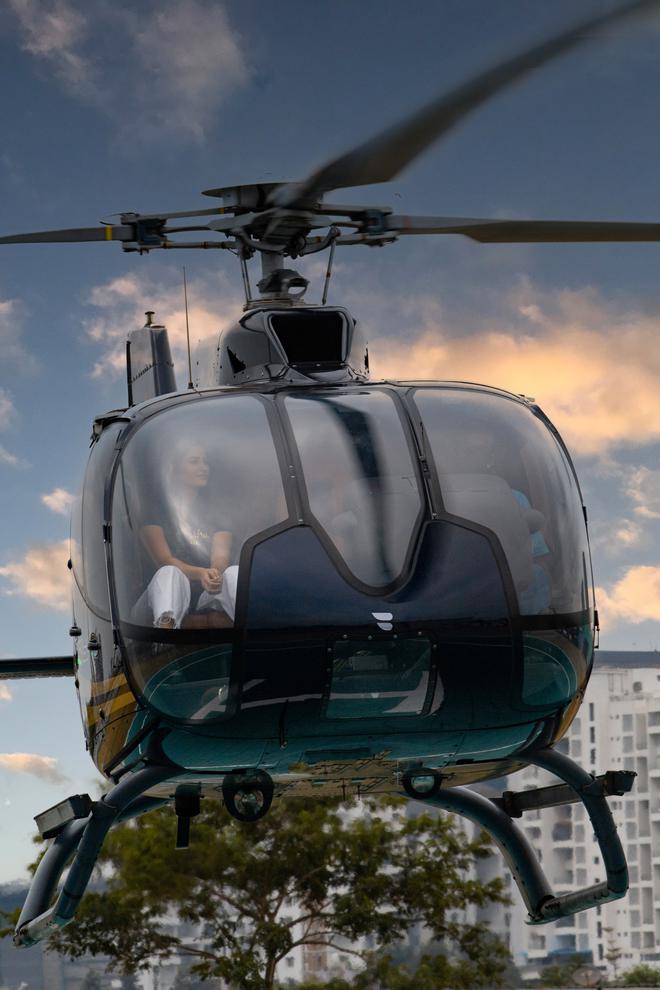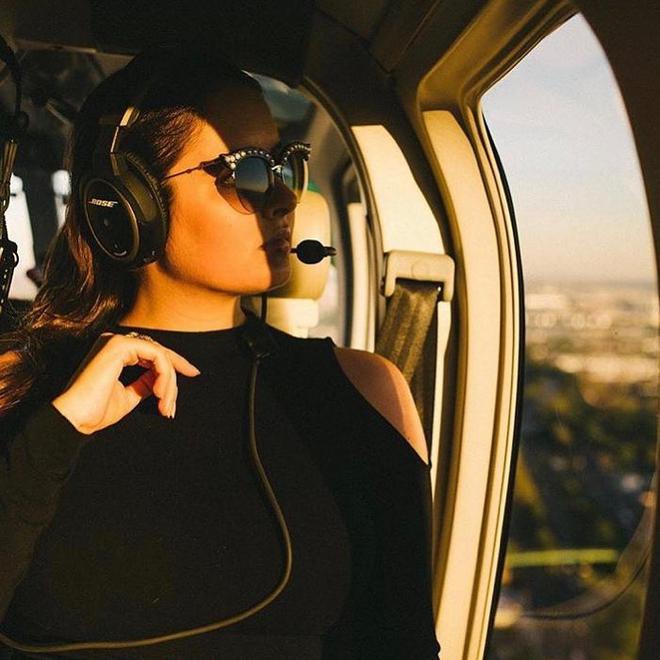Five years ago, when the city’s first heli-taxi service lifted off from the Kempegowda International Airport (KIA), it was billed as Bengaluru’s ultimate congestion-killer. Bypassing the gruelling traffic-jammed roads down below, it could reach far-off Electronic City in 15 minutes flat for a fare that was less than ₹5,000. Yet, after 1,100 trips since launch, the service was suspended and remains grounded for over two years. Can it fly again?
Heli-taxi rides to and from the city’s main airport by operator Thumby aviation were suspended for a reason in May 2019: The helipad used for the service had to make way for the airport’s massive expansion drive and a new 10-land access road. Building a new helipad far beyond the airport terminal would mean travelling more than 15 minutes by road, not a very attractive prospect for potential passengers.
A new helipad is yet to take shape. Thumby Aviation, as its Chief Executive Officer Govind Nair informs, is looking at restarting the service sometime in February 2024. “The helipad is still not operational. Besides, winter is not the right time to start as we definitely have visibility issues in the morning. There are Air Traffic Control (ATC) restrictions,” he explains.

Single-engine copters
But for heli-taxis to become a game-changer, single-engine copters should be allowed to land and take off from the city’s innumerable rooftop helipads, says Govind. “This will see a tremendous boom, and will be a tipping point.” Currently, the Directorate General of Civil Aviation (DGCA) allows only a lone five-star hotel in the city centre to operate its helipad exclusively for twin-engine choppers.
A new player, Blade India, entered the intra-city heli-taxi arena last year. Now put on hold, the service took passengers from the Blade Lounge, a short car ride from the airport terminal, to the city centre. A Blade car shuttled the passengers between the Lounge and the pick-up point 2 at the airport departure terminal.
Blade India, which operated a single-engine five-seater helicopter had an occupancy of 75%, informs a company spokesperson. “The per-seat cost was ₹4,500 with luggage not exceeding 7kgs. The fare was the same for KIA to HAL, where we had a helipad, and KIA to Electronic City. We have put these services on hold and are currently focusing on charters and intercity due to the heavy leisure travel demand,” the spokesperson explains.
Corporate business travellers
Most Blade passengers were corporates. “It makes sense to business travellers who fly down to Bengaluru for a two-hour meeting in Electronic City and fly back the same day. The service cuts down their travel time from KIA to Electronic City to 15 minutes with another 10-15 minutes for airport to helpad transfers. The KIA to HAL helicopter flight is about 12 minutes.”
It is estimated that Bengaluru has over 90 rooftop helipads atop high-rises spread across the city. Since most are located in residential areas, the regulator sees single-engine helicopters as a safety risk in the event of an engine failure. However, in terms of operational cost, these copters are seen as much more commercially viable than twin-engine choppers.
Besides, the multiplicity of DGCA-approved helipads could reduce the actual flight time between origin and destination to two-three minutes. The estimated fare per seat could potentially drop to about Rs 3,000, comparable to an hour-long airport cab ride that typically ranges from ₹1,000 to ₹1,800 with peak-hour surcharges.

BBMP’s helipad plan
In 2018, around the same time when Thumby Aviation launched its service with a six-seater Bell 407 helicopter, the Bruhat Bengaluru Mahanagara Palike (BBMP) had created a buzz with this announcement: Eight ground-level helipads to be built in each of its eight zones. The plan was to set up these facilities on one acre of land with well-equipped infrastructure.
The then Mayor R Sampath Raju had even informed that he had met DGCA officials in Delhi to discuss the project. The helipads were to cater to heli-ambulances and avoid VVIP vehicles from triggering traffic jams for regular commuters. Five years later, there is no talk of these helipads.
Taking a long term perspective, urban mobility analyst Sanjeev Dyamannavar feels the government could build helipads atop Traffic Transit Management Centres (TTMCs). “Most TTMC have decent accessibility. They had proposed to build a big multistoried tower at the Metro Majestic Interchange. Why not build a rooftop helipad there. People can land there, take the Metro to anywhere. Navi Mumbai’s Belapur suburban railway station has such a helipad,” he points out.
All about commercial viability
Independent aviation consultant Capt Aravind Sharma says it is not about the infrastructure, but commercial viability. “Everything is too expensive at the operator’s end. Infrastructure is not an issue, I see 20-30 helipads being physically constructed. But I don’t know how many are approved. In the Manyata Techpark area itself, there are five of them. Maybe it was a selling point for the builders,” he notes.
In terms of viability, he says the KIA to Electronic City route is workable. Arvind explains, “It is a good 2.5 hour to 3 hours by road on a busy traffic day and it takes about 20-25 minutes by helicopter. But at ₹3,500, operators will be taking a beating. You still have to move the baggage by the road. Unless you have one small briefcase. The question is whether the market is willing to pay that much money at that price point to save that much travel time.”
Intra-city heli-taxi services have been a success in the Brazilian city of Sao Paulo. “The price point must be much cheaper there,” he says. “In India, the cost price itself is heavy. Helicopters, fuel, manpower are all expensive. That has to come down. Serious breakdown in entry prices like what Capt Gopinath did with Air Deccan should happen. It has to be financially viable for even the rich man.”

Huge demand exists
At ₹4,500 a seat, Blade India is convinced it is workable and wants to restart its service soon. “There is a huge demand from the corporate crowd. The scope for heli-connectivity between HAL, Whitefield and Electronic City is huge. There are also many leisure travellers who might want to first get to the city, land in HAL and then take a helicopter to say, Kabini,” the spokesperson explains.
But aviation expert Devesh Agarwal draws attention to another air travel reality that he says, might not favour a scaling up of heli-taxi services at least in the short term. He explains, “Most corporate traffic involving business travellers happens before 9 a.m. Road traffic peak in the city is post 9 a.m. So, by taking the helicopter, what time are they saving?” However, the evening peak traffic scenario is a different story, as the Airport Road congestion at Hebbal intersection tellingly illustrates.
In any case, both Thumby Aviation and Blade India have demonstrated that heli-taxi services are indeed possible with the right policy, pricing and infrastructural interventions. Thumby Aviation, in operation from 2018 to 2020, carried about 5,000 passengers operating four shuttles a day at an efficiency of about 60%. Both players are preparing for a relaunch after the winter season. Scaling up might be many years away, but the baby steps have already been taken.







